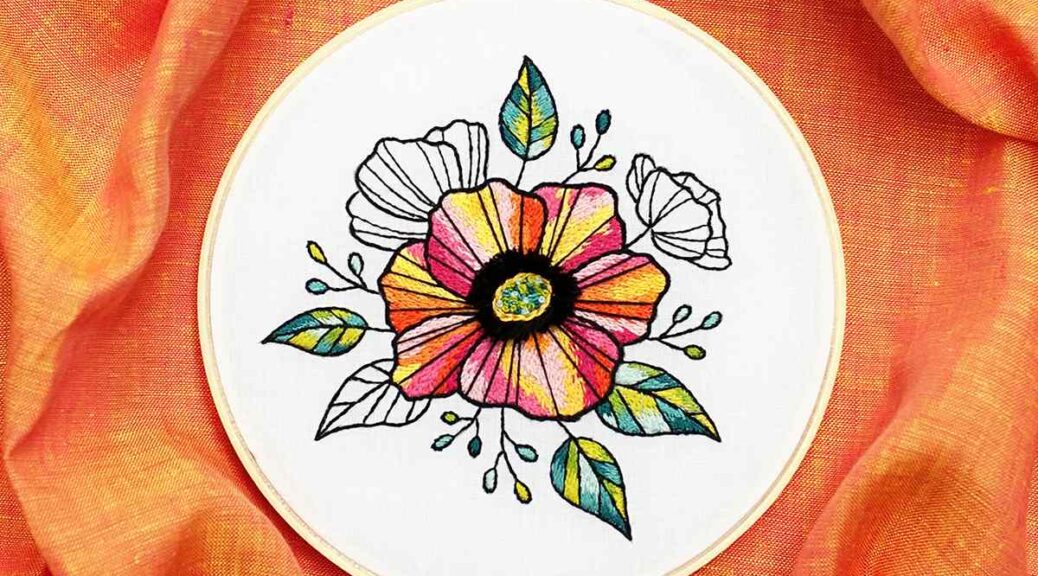
The Timeless Art of Embroidery A Journey Through History, Techniques, and Creativity
Embroidery, with its delicate stitches and intricate designs, has captivated artisans and enthusiasts for centuries. From ancient civilizations to modern fashion runways, embroidery has left its mark on cultures around the world, evolving and adapting to reflect changing times and trends. Join us as we embark on a journey through the rich tapestry of embroidery, exploring its history, techniques, and enduring appeal.
Threads of History:
The origins of embroidery can be traced back thousands of years. Evidence of early embroidery dating as far back as the Iron Age. From the silk embroideries of ancient China to the elaborate tapestries of medieval Europe, embroidery has been used to adorn clothing, textiles, and decorative objects, serving as a means of artistic expression and cultural identity.
Early embroidery techniques:
Early embroidery techniques were often labor-intensive and required meticulous attention to detail. Some of the earliest known techniques include chain stitch, cross stitch, and satin stitch, which were used to create intricate patterns and motifs on fabric.
Embroidery was not only prized for its decorative value but also for its practical applications. Such as reinforcing seams, mending garments, and embellishing ceremonial attire.
Embroidery Across Cultures:
Embroidery has played a significant role in cultures around the world, with each region boasting its unique styles, motifs, and techniques.
From the colorful geometric patterns of Native American beadwork to the intricate floral designs of Indian kantha embroidery, the diversity of embroidery traditions reflects the richness of human creativity and ingenuity.
Renaissance of Embroidery:
The Renaissance period witnessed a resurgence of interest in embroidery, with nobility and royalty commissioning lavish embroidered garments and textiles.
Embroidery became a symbol of wealth, status, and social prestige. With highly skilled embroiderers commanding high wages for their intricate workmanship.
The Artistry of Embroidery Techniques:
Embroidery encompasses a wide range of techniques, each requiring a unique set of skills and tools. From hand embroidery to machine embroidery, the artistry of embroidery techniques continues to inspire and captivate artisans and enthusiasts alike.
Hand Embroidery:
Hand embroidery is perhaps the most traditional and time-honored form of embroidery, requiring only a needle, thread, and a steady hand.
Stitching techniques such as satin stitch, stem stitch, and French knot are meticulously applied to create intricate designs and patterns on fabric.
Machine Embroidery:
Machine embroidery, on the other hand, utilizes computerized embroidery machines to stitch designs onto fabric automatically.
While machine embroidery offers speed and precision, it lacks the handmade charm and intricacy of traditional hand embroidery.
Specialty Techniques:
In addition to basic stitching techniques, embroidery encompasses a variety of specialty techniques, such as stumpwork, goldwork, and blackwork.
These techniques involve the use of additional materials such as metal threads, beads, and sequins to create three-dimensional effects and embellishments.
Exploring the Modern Landscape of Embroidery:
In today’s fast-paced world, embroidery continues to evolve and adapt to changing tastes and technologies. From haute couture fashion to contemporary art installations, embroidery finds new avenues for expression and innovation.
Fashion and Textiles:
History Embroidery remains a popular embellishment technique in the world of fashion, with designers incorporating intricate embroidered motifs into their collections.
From bridal gowns and eveningwear to casual apparel and accessories, embroidery adds a touch of elegance and sophistication to garments and textiles.
Home Décor and Crafts:
Embroidery is also making a comeback in the realm of home décor and crafts, with DIY enthusiasts embracing embroidery as a creative outlet.
Embroidered pillows, wall hangings, and hoop art are just a few examples of how embroidery can be used to personalize and beautify living spaces.
Contemporary Art:
In the realm of contemporary art, embroidery has emerged as a medium for self-expression and social commentary.
Artists push the boundaries of traditional embroidery techniques, experimenting with unconventional materials and themes to create thought-provoking works that challenge perceptions and inspire dialogue.
FAQs (Frequently Asked Questions):
What materials do I need to start embroidering?
To start embroidering, you’ll need basic supplies such as embroidery needles, embroidery floss or thread, embroidery hoops, and fabric. Additional supplies may include embroidery scissors, transfer pens or pencils, and a variety of embroidery stitches.
Is embroidery difficult to learn?
While embroidery requires practice and patience, it is a relatively accessible craft that can be learned by beginners with dedication and persistence. There are numerous tutorials, books, and online resources available to help you master basic embroidery stitches and techniques History.
Can I use embroidery to personalize my clothing and accessories?
Absolutely! Embroidery is a versatile technique that can be used to personalize clothing, accessories, and other items. You can embroider initials. Names, or custom designs onto garments, bags, hats, and more to add a unique touch to your History wardrobe.
What are some popular embroidery styles and motifs?
Popular embroidery styles and motifs vary depending on cultural traditions, personal preferences, and design trends. Some common styles include floral embroidery, geometric embroidery, and traditional folk embroidery motifs such as paisleys, birds, and animals.
Conclusion:
Embroidery is a timeless art form that has captured the imagination of people around the world for centuries. From its humble beginnings as a practical craft to its current status as a revered form of artistic expression. Embroidery continues to inspire and enchant artisans and enthusiasts of all ages. Whether you’re a seasoned embroiderer or a novice crafter, the beauty and versatility of embroidery offer endless possibilities for creativity and self-expression. So pick up a needle and thread, and let your imagination soar as you embark on your own embroidery journey.